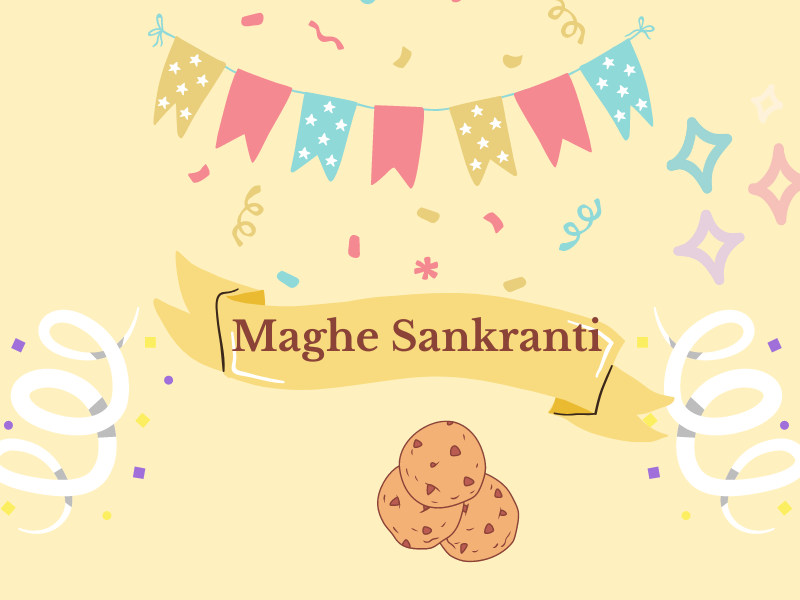Maghe Sankranti, an auspicious festival celebrated with great zeal in Nepal, holds profound cultural significance and serves as a bridge between the harsh winter and the joyous arrival of spring. This is a festival of cultural heritage. In this blog post, we delve into the historical, religious, and social significance of this vibrant festival, examining its unique customs, rituals, and festivities that are integral to the cultural fabric of Nepal.
Historical Origins and Cultural Significance
Maghe Sankranti finds its roots in ancient traditions, tracing back to Hindu mythology and Vedic rituals. Derived from the solar calendar, this festival marks the transition of the sun into the zodiac sign of Capricorn (Makar). It is celebrated on the first day of the month of Magh (around January 14th) and signifies the end of the inauspicious month of Poush. The festival’s evolution is traced through historical records and religious texts, uncovering the blend of Vedic and indigenous customs that shape its cultural significance.
Celebratory Rituals and Ceremonies
Maghe Sankranti brings families and communities together in joyful celebration. One of the key rituals is taking holy dips in sacred rivers, symbolizing purification and the shedding of sins. The immersion in the holy waters holds deep spiritual importance and signifies the welcoming of positive energy in the new season. Additionally, devotees partake in religious offerings and prayers to honour the sun god, Surya, and seek blessings for prosperity, health, and happiness.
Traditional Dishes and Culinary Delights
Culinary traditions play a vital role in Maghe Sankranti celebrations. The consumption of traditional dishes holds deep cultural significance, signifying abundance and prosperity. Yamari, a popular delicacy made from rice flour and molasses filled with sweetened sesame seeds and coconut, is a staple during this festival. You can explore the regional variations and symbolism behind the preparation and sharing of these delectable dishes.
Cultural Significance for Tharu Community
Maghe Sankranti holds a special place in the hearts of the Tharu community. They celebrate this vibrant festival with unique fervour and enthusiasm. As a cherished cultural occasion, Maghe Sankranti plays a crucial role in preserving the identity and heritage of the Tharu people. Throughout the festivities, members of the Tharu community come together, showcasing their rich cultural practices and beliefs that have been passed down through generations. This joyful celebration fosters a strong sense of unity and solidarity among the Tharu people, reinforcing their cultural bonds and shared values. Maghe Sankranti serves as a cherished tradition that not only brings families and communities together but also highlights the cultural diversity and unity that define Nepal’s cultural landscape.
Social Impact and Contemporary Celebrations
Maghe Sankranti holds great significance in contemporary Nepalese society, extending far beyond its religious and cultural roots. As a time of joyous reunions and festivities, the festival brings families and friends together, fostering a strong sense of community bonding and social cohesion. The celebratory atmosphere transcends cultural boundaries, uniting people from diverse backgrounds in shared merriment. The festival’s social impact becomes evident, highlighting its role in promoting cultural harmony and preserving the nation’s rich cultural heritage. Maghe Sankranti serves as a unifying force, strengthening social ties and reinforcing the sense of cultural identity that lies at the heart of Nepalese society.
Conclusion
In conclusion, the Maghe Sankranti festival holds profound cultural significance and exemplifies the rich cultural diversity that defines Nepal. Rooted in historical and religious traditions, this vibrant celebration showcases the country’s unique customs, rituals, and culinary delights. Its enduring importance lies in its ability to strengthen community bonds. Moreover, it fosters a sense of cultural identity and preserves Nepal’s treasured cultural heritage. As we embrace the joy and reverence of Maghe Sankranti, we come together in unity, cherishing the festival as an indispensable part of Nepal’s cultural fabric. This celebration serves as a symbol of shared heritage and collective pride, reinforcing the country’s unique identity as a cultural treasure trove in the heart of South Asia.
